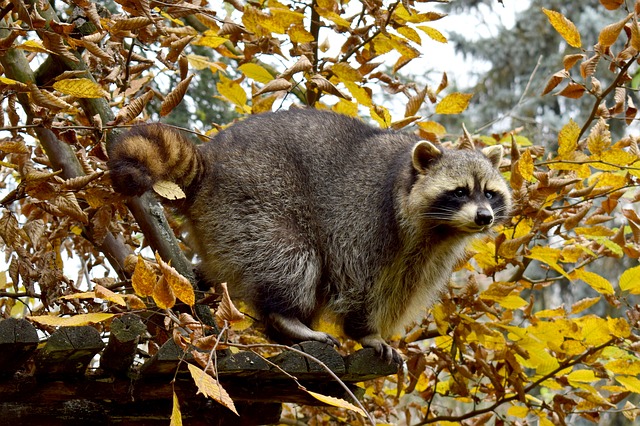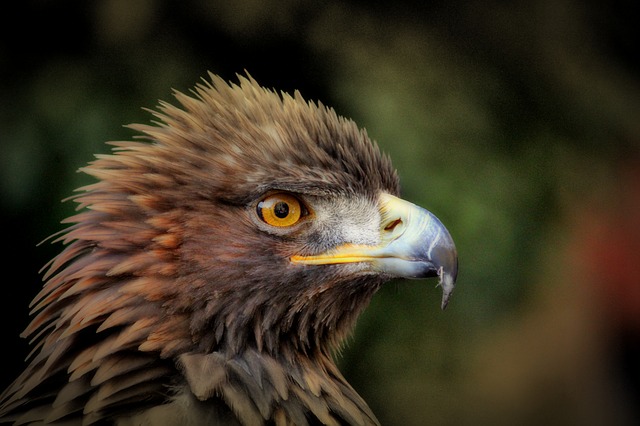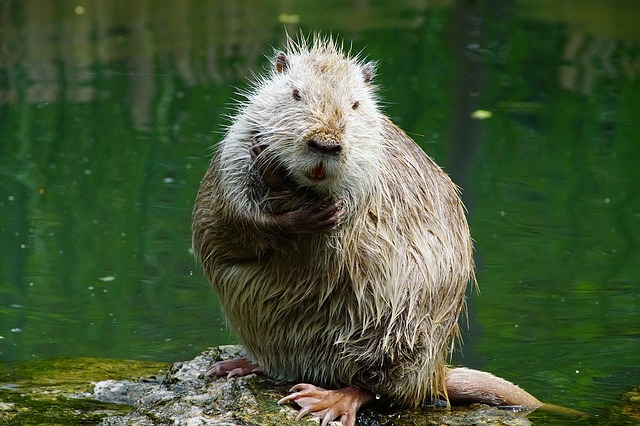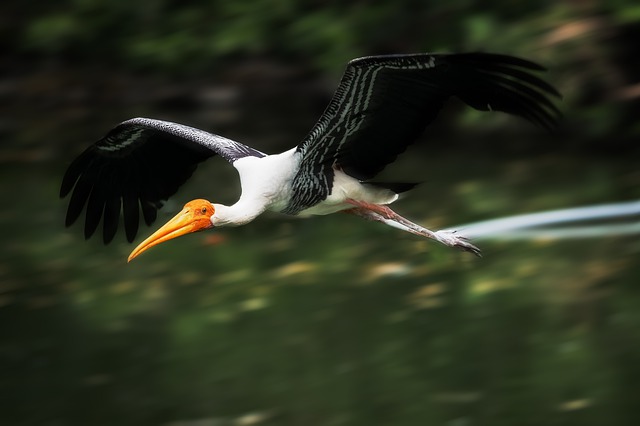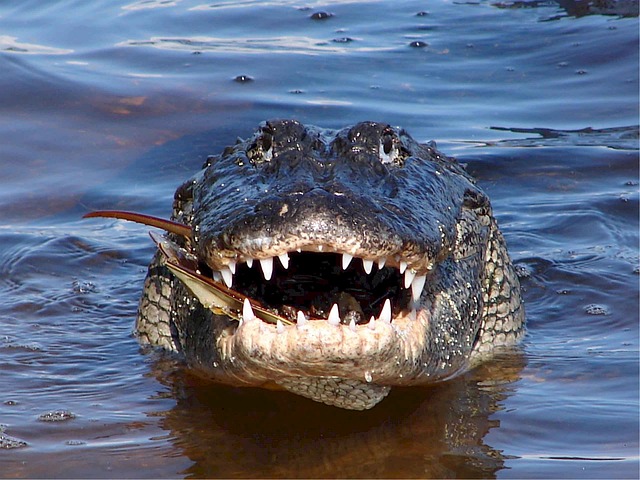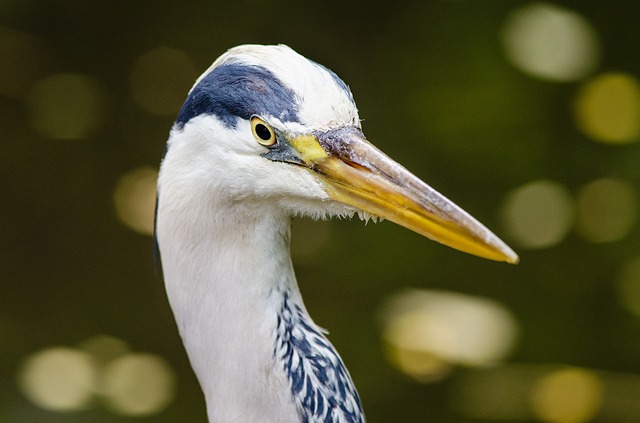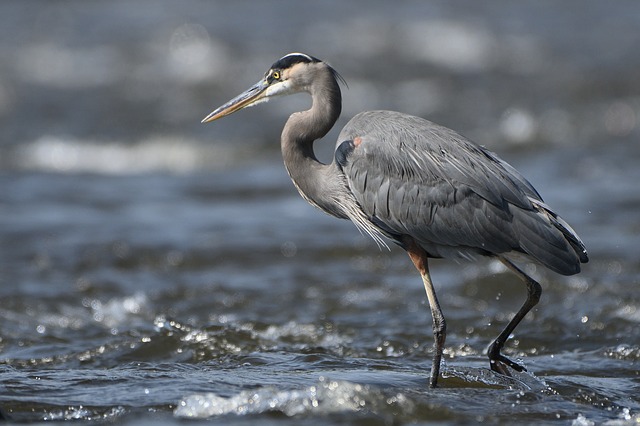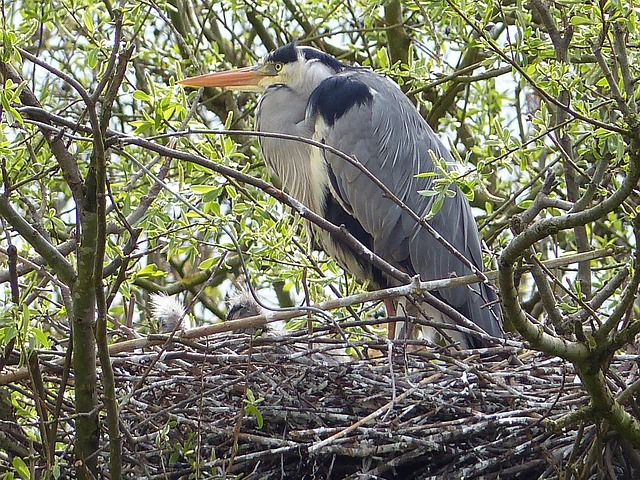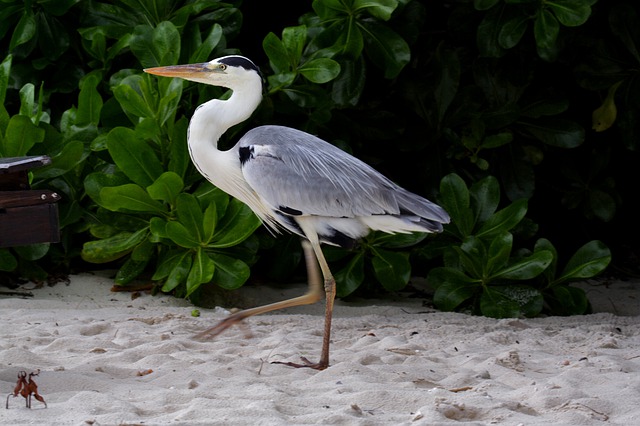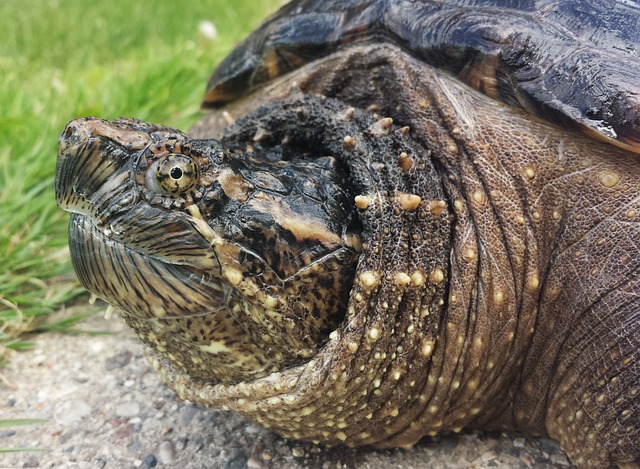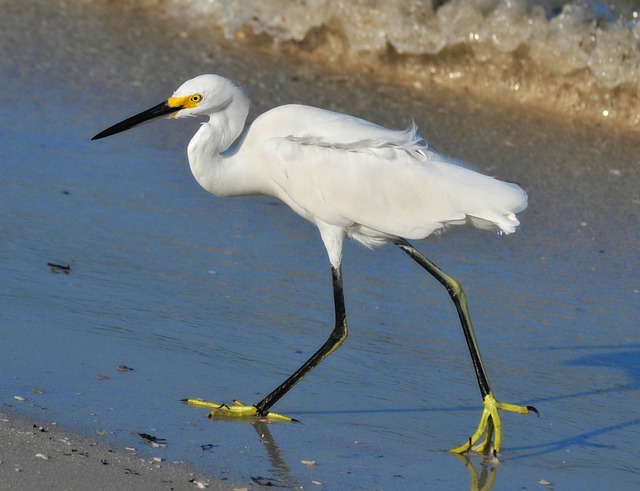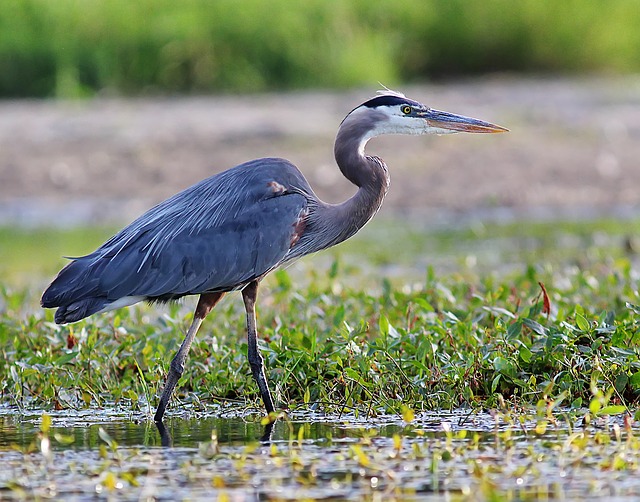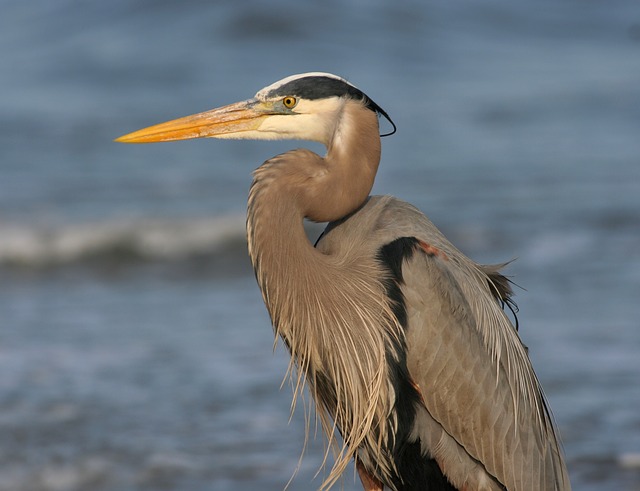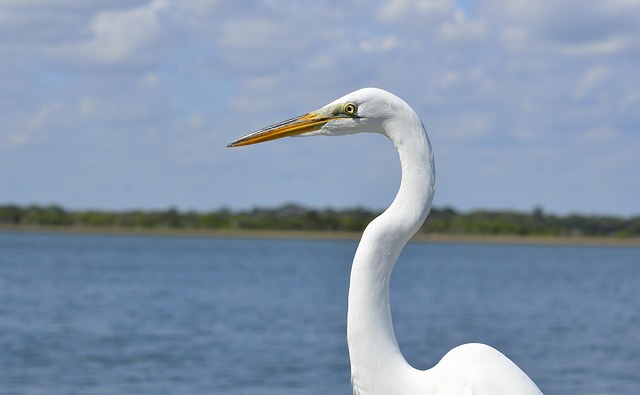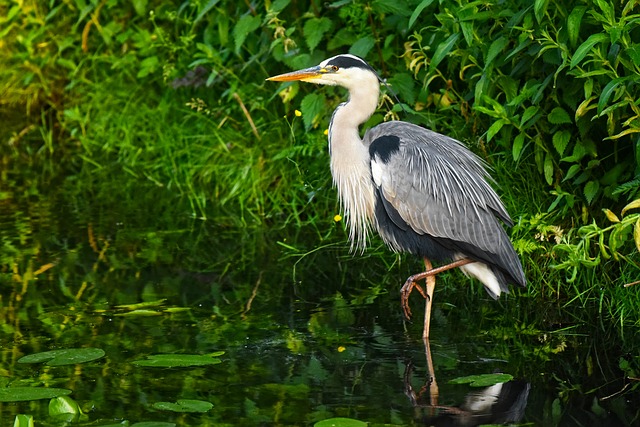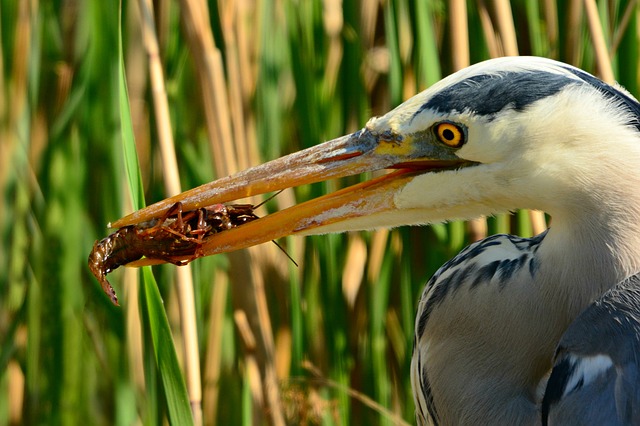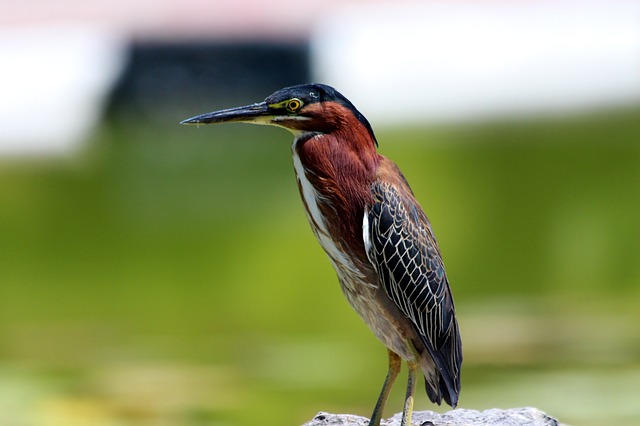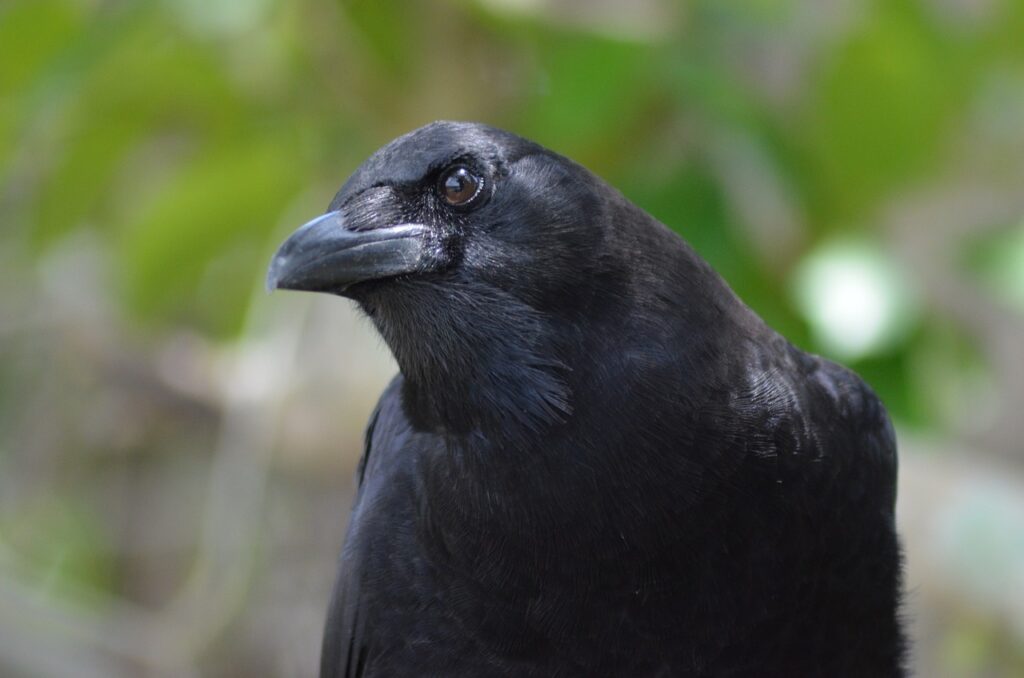
Do crows mate for life? Yes, they do. And this behavior is highly advantageous to them. Here’s what you’ll want to know.
How Do Crows Attract A Mate?
Crows are social birds; most of the year, they live in small family groups. During the breeding season, however, single male crows that have reached sexual maturity will leave the group and attempt to find a mate and establish their territories.
In addition to securing a territory, male crows will also vocalize using a range of calls and songs to impress females. Physical displays such as puffing up their feathers, bobbing their heads, and spreading their tales, along with flapping and spreading their wings, are also used to signal females.
Sometimes, males will bring food and nesting materials to an individual female to try and impress her as well. Females will decide whether or not to pair with a male based on the quality of his displays and his perceived ability to provide for her and her future offspring.
If she approves of the male crow, they will move into his male’s territory and mate. Although female crows are quite selective. If they aren’t impressed with the available males they may simply choose to wait until the following year to find one.
When Do Crows Mate?
It typically takes crows anywhere from two to four years before they are sexually mature and ready to mate. This varies from crow to crow and can also be influenced by the availability of resources in their environment. Crows have a delayed sexual maturity when compared to other types of birds.
This is believed to be an advantage for survival as it gives them time to gain experience and learn important social behaviors before going off to reproduce. The time of year that crows mate depends on where they live.
In North America, for example, the crow mating season is typically from March to May. However, in Europe, it tends to be from April to June. And in Australia, it normally runs from September to January.
Do Crows Mate For Life?
Crows do mate for life. They stay with their partner year-round and together they will forage, build a nest, mate, raise their young, and defend their territory. They will do this year after year and as a result, they form very strong bonds. Crow pairs can often be seen grooming each other.
This behavior is believed to strengthen their bond (similar to when apes and monkeys groom members of their social group). Known as allopreening, crows use their beaks to comb, probe, and pick through their mate’s feathers and remove pests such as mites and flies, along with debris.
However, there are exceptions, and sometimes crows do split up. For instance, when one of the crows can’t successfully reproduce the pair may split and each will attempt to find a new partner.
Why Do Crows Mate For Life?
Mating for life has several advantages. One of the biggest is that both parents are there to help care for and protect the young instead of only the female. This helps to increase the odds of their young surviving.
It also allows them to use their resources, such as energy, more efficiently as they can share responsibilities so that while one parent is guarding the nest, the other can be foraging for food, for example. Mating for life makes for a more powerful pair bond as the bond between the two birds grows over time, providing them emotional support.
What Do Crows Do When Their Mate Dies?
Crows are known to engage in mourning behavior around the dead crow calling loudly. This may sometimes last for several days. Because the bond between mates is vital when one dies, the remaining crow may be impacted heavily.
As the remaining crows do not have their mate to protect them or their offspring, they may adjust their behavior and compensate by becoming more aggressive and territorial. Depending on the individual crow, they may spend more time with other crows in their family group than they did before or less.
When it comes to finding a new mate, that depends on the individual crow as well. Some birds may seek a new mate rather quickly, while others may wait longer.
And some birds, often older crows that had been pair bonded for a long time, may never look to find a new mate. So while crows mate for life, there are circumstances such as the death of their partner, which may cause them to find a new mate or even stay single for the rest of their days.
Start Shopping for Birding Supplies!
Raccoon Pictures
Raccoons are easily recognizable by their black face mask and ringed tail. And there are many fascinating things about this intelligent nocturnal species. So we’ve compiled some of the best raccoon pictures to show you just how amazing and unique they are. Raccoon...
Eagle Pictures
Eagles are large powerful raptors with sharp talons and beaks. These apex predators are typically at top of the food chain and there are many interesting things about them. So we’ve compiled some of the best eagle pictures to show you just how amazing they are. Bald...
Nutria Pictures
Nutria are large semi-aquatic rodents from South America. In the United States where they were originally imported for the fur industry, they are an invasive species. Despite their pest status, there are many interesting things about them. So here are some of the best...
Stork Pictures
Storks are tall wading birds with long legs and necks. These amazing birds have many fascinating things about them. And we’ve compiled some of the top stork pictures to help show you just how interesting and beautiful they are. White Stork The white stork has a body...
Alligator Pictures
The American alligator is a large predatory reptile that inhabits the southeastern United States. It’s a fascinating animal with many interesting things about it. And we’ve collected some of the best alligator pictures to help show you just how amazing they are....
How Long Do Great Blue Herons Live?
The life expectancy of birds is known to be closely related to their size. So as the biggest heron species in North America, how long do great blue herons live? The average life expectancy for these large birds is around fifteen years. However, surviving their first...
Where Do Great Blue Herons Live?
The great blue heron is considered to be the most widespread heron in North America. So exactly where do great blue herons live? Here’s what you’ll want to know. Great Blue Heron Range The great blue heron is found throughout most of the North American continent. In...
Where Do Great Blue Herons Nest?
While many of us have seen great blue herons their nesting habits often remain a mystery to most people. That’s because they purposely nest in hard-to-reach places. So where do great blue herons nest? Here’s the answer. A Colony Nester Typically great blue herons nest...
Do Great Blue Herons Migrate?
Do great blue herons migrate? This is something many people wonder about, especially if they’ve seen a heron during the cold winter months. And the answer is both yes and no. Here’s what you’ll want to know. Great Blue Heron Range The great blue heron has a large...
Great Blue Heron Pictures
Few species of birds are as tall, elegant, and attractive as the great blue heron. So we’ve compiled some of the best great blue heron pictures for you to admire and help you to learn more about this amazing bird! Great Blue Heron Head The head of the great blue heron...
What Do Snapping Turtles Eat?
Many people are familiar with the fact that snapping turtles have an incredibly strong bite. They use their strong jaws and sharp beak not just for defense but also for catching food. So what do snapping turtles eat? Here's what you'll want to know. Snapping turtles...
Birds That Look Like Egrets
Egrets are predatory birds that hunt and live in a range of both freshwater and saltwater habitats. These birds are usually white, and have S-shaped necks, long legs, and dagger-like beaks. However, they are often mistaken for several other types of birds that look...
Birds That Look Like Storks
Storks are large wading birds with robust bills and long legs. These tall carnivorous birds are well-known for their wide wingspans and also for building huge nests. However, they are often confused with several other bird types that have a similar appearance. So...
Birds That Look Like Herons
Herons are tall birds with long slender legs and necks. And they often wade in the water when hunting for food. Yet there are several other types of birds that may be mistaken for them. To make things more confusing many of these birds also spend time in the water and...
Great Blue Heron Facts
The great blue heron is named for its size and the grey-blue color on its wings, stomach, and back. This species has many fascinating things about it. So here are the top great blue heron facts. It's The Largest North American Heron The great blue heron is a big bird...
Are There White Herons?
Are there white herons? This is something many people wonder especially after seeing a tall all-white bird. The answer is yes! And here’s a fast introduction to them. A White Color Morph Most people are familiar with the great blue heron, a large predatory and...
Great White Heron Facts
While many people are familiar with the great blue heron, they are often surprised to find out that there’s also a great white heron. There are many things you’ll want to know about this stunning bird. So here are the top great white heron facts. The Great White Heron...
What Animals Eat Herons?
Because of their size and long sharp beaks, it can be hard to imagine that herons have any natural predators. While they do, they definitely don’t have nearly as many predators as most other types of birds. So what animals eat herons? Predators Of Adult Herons For...
What Do Herons Eat?
Great blue herons are often seen slowly wading in shallow water hunting for food. You may have even spotted one of these large birds in your own backyard pond. This leaves many people wondering: “What do great blue herons eat?” And here’s everything you’ll need to...
What Do Green Herons Eat?
The green heron is a secretive and small heron species. What it lacks in size however it makes up for in intelligence. It is particularly well-known for how it uses its smarts when hunting for food. So what do green herons eat? Read on to find out. Meet The Green...
